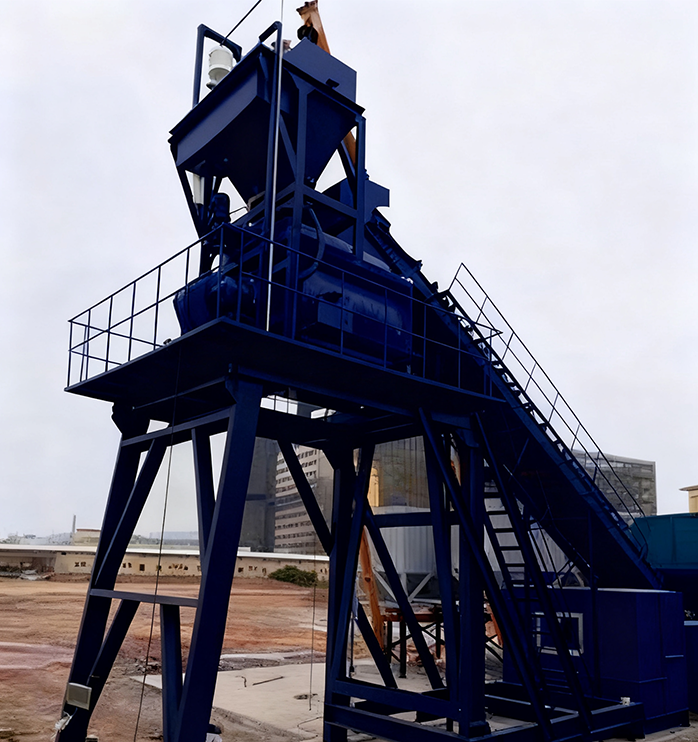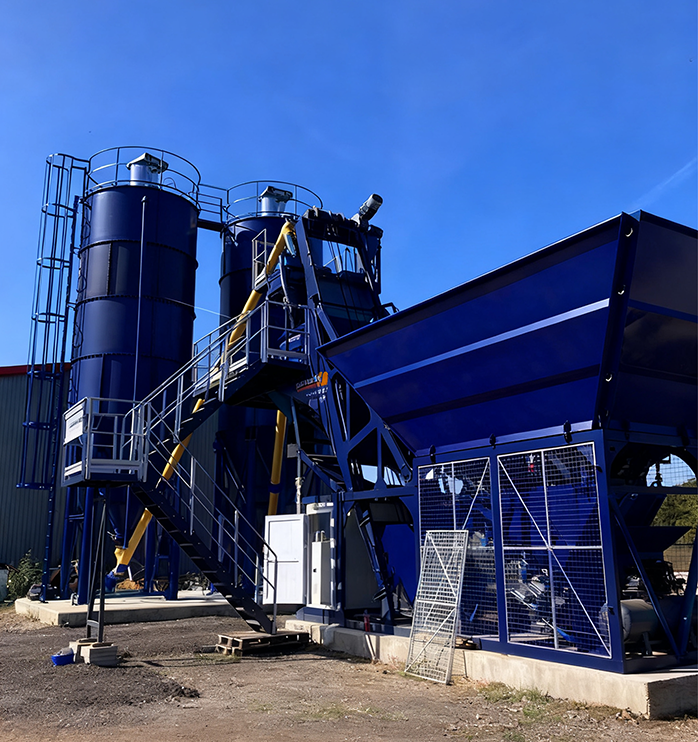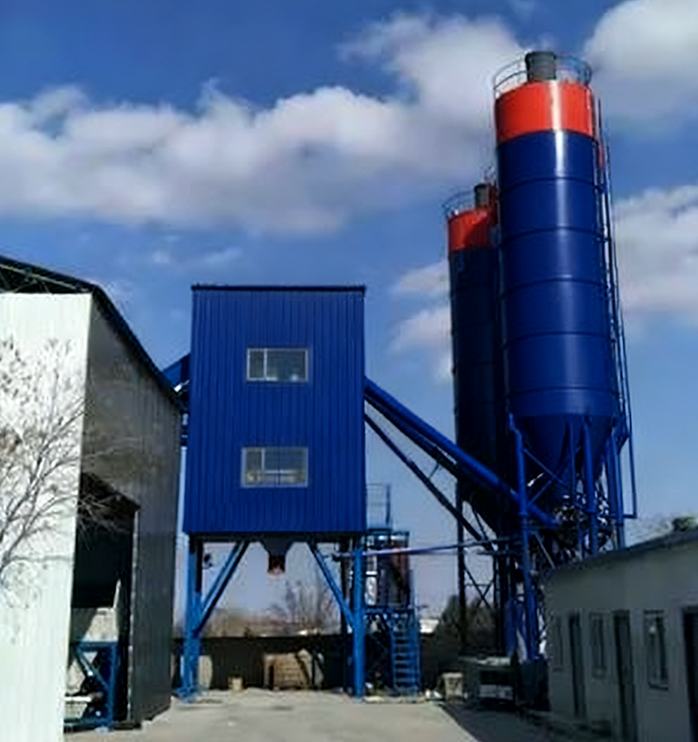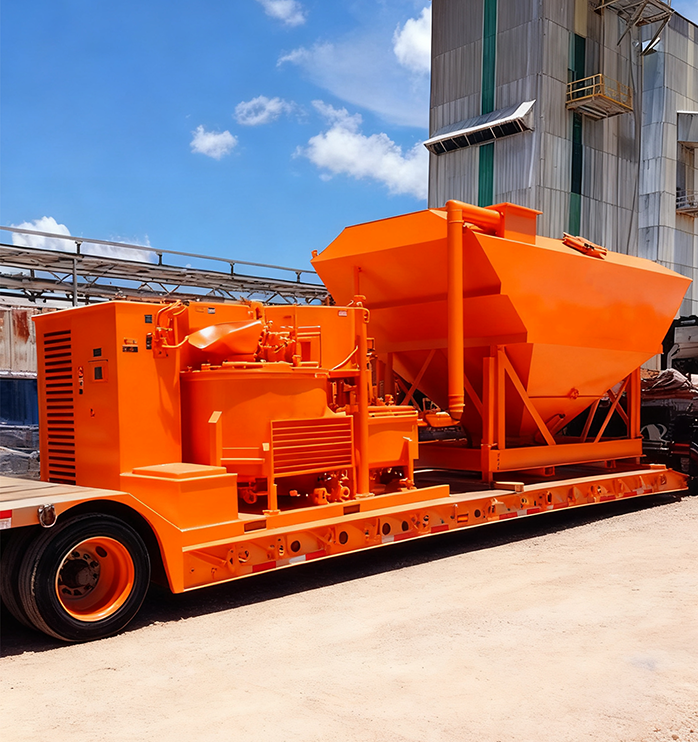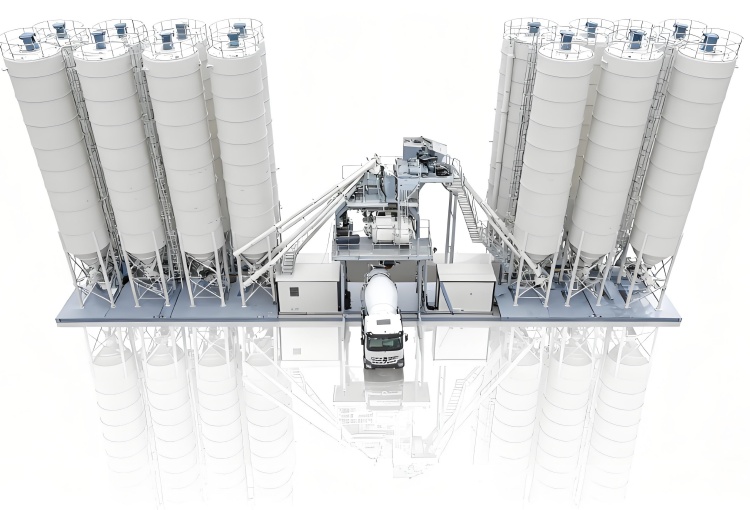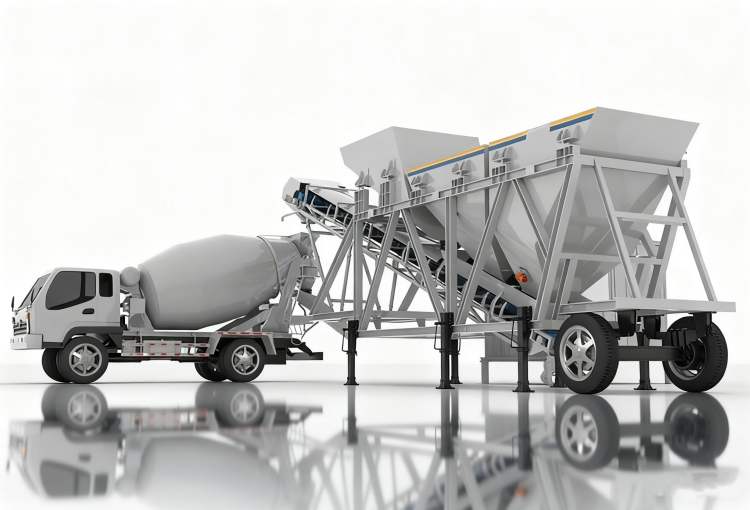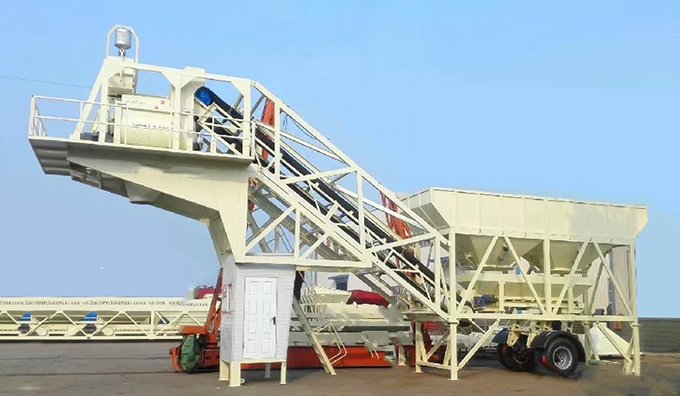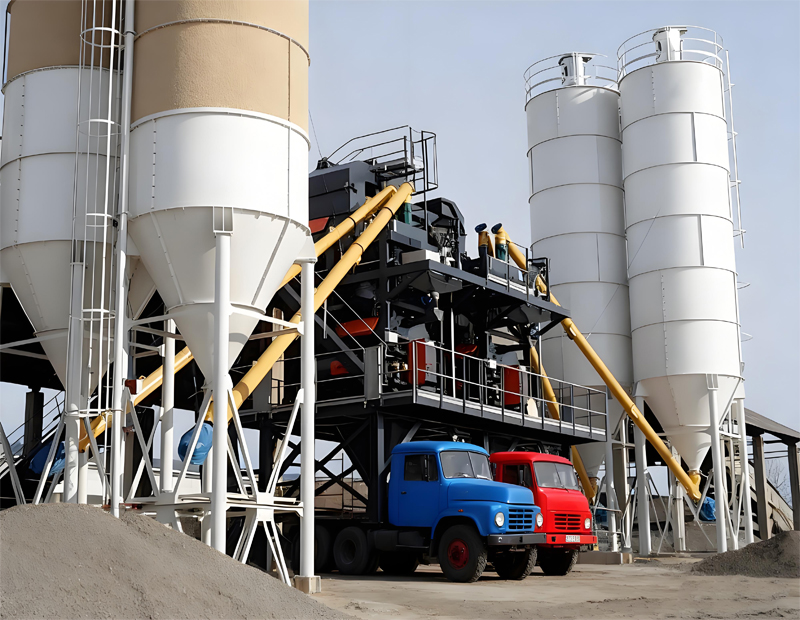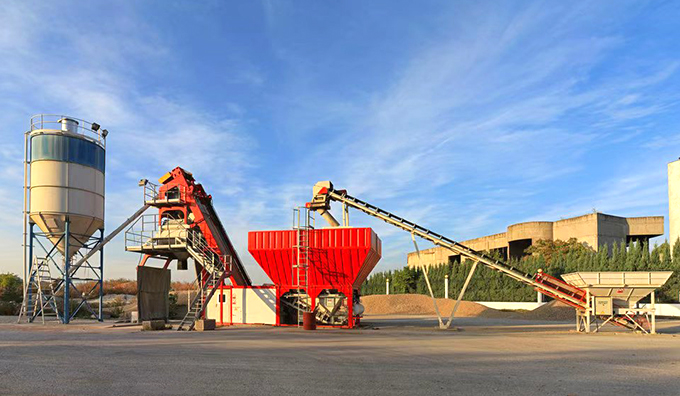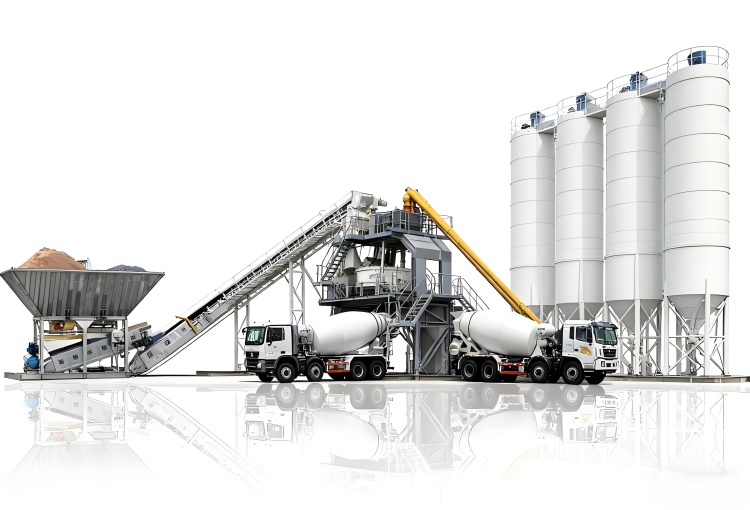1. Introduction: The Shift Toward Mobility
Global infrastructure development is rapidly accelerating, driven by urbanization, industrial expansion, and government investment in highways, bridges, and smart cities. In this evolving landscape, portable concrete batching plants are emerging as game-changers. Unlike traditional stationary concrete batching plants, portable units allow construction firms to produce concrete directly on-site, optimizing operational efficiency and lowering costs.
Scenario: In a remote bridge project in Africa, deploying a mobile concrete batching plant reduced transport expenses by 20% while maintaining consistent concrete quality across multiple phases of the project.
Interestingly, mobility combined with automation is now redefining how construction managers, engineers, and procurement teams approach project planning.
2. Core Drivers Behind the Popularity of Portable Plants
2.1. Cost and Resource Optimization
Transporting ready-mix concrete from distant facilities often results in high logistical costs, potential delays, and increased material waste. On-site production via portable concrete batching plants reduces fuel consumption, minimizes labor costs, and improves project timelines.
Operational Insight: Using a concrete batching plant mini for a mid-scale highway project in Southeast Asia reduced both material wastage and labor overhead by 15%, delivering tangible ROI.
2.2. Time-Sensitive Project Delivery
Modern infrastructure projects demand rapid construction cycles. Portable plants provide immediate deployment, quick assembly, and swift relocation capabilities, allowing contractors to meet aggressive deadlines without sacrificing quality.
2.3. Quality Consistency
Integration of automated systems in concrete mixing plants ensures precise dosing, consistent moisture levels, and accurate aggregate proportions. Modern concrete batch plant software monitors these parameters in real-time, guaranteeing uniformity even in remote sites.
2.4. Environmental Compliance
On-site batching reduces transportation-related emissions. Portable units increasingly incorporate dust collectors, wastewater treatment, and energy-efficient motors. Dry concrete batching plants with modular designs often comply more readily with local environmental regulations than older stationary plants.
3. Real-World Operational Challenges
Despite their advantages, portable plants face operational and technical challenges:
-
Material Variability: Aggregate composition and moisture content can vary, affecting mix consistency.
-
Limited Footprint: Compact layouts for volumetric concrete batching plants may limit storage capacity.
-
Equipment Wear: Frequent relocation can accelerate wear on mixers, conveyors, and control panels.
-
Automation Limitations: Smaller portable units may not integrate fully with advanced concrete batching plant control panels.
In fact, these issues, if unmanaged, can lead to production downtime and inconsistent concrete quality, affecting project deadlines and budgets.
4. Strategic Solutions for Portable Concrete Operations
This section focuses on actionable solutions to optimize portable plant operations, forming the core of the article.
4.1. AI-Assisted Mix Standardization
Implement concrete batch plant software to standardize mix designs based on historical material data and site conditions. AI can predict adjustments for varying moisture, temperature, and aggregate properties.
Steps to Implement:
-
Collect local material data and environmental conditions.
-
Input specifications into AI-enabled concrete mixing batching plant software.
-
Validate suggested ratios on a pilot batch.
-
Deploy standardized mixes across the site.
Scenario: A Southeast Asian highway project reduced rejected batches by 18% using AI-assisted mix adjustments in portable plants.
4.2. Optimal On-Site Layouts
Strategic placement of silos, mixers, and conveyors reduces internal transport times. Concrete batching plant parts should be positioned for efficient material flow. Consider modular setups for rapid relocation.
ROI Impact: Optimized layout increased production efficiency by 12% in multiple remote sites.
4.3. Preventive Maintenance
Regular maintenance extends equipment lifespan and minimizes downtime:
-
Calibrate weighing systems and sensors (concrete batching plant calibration)
-
Inspect conveyors, mixers, and concrete mixing plant equipment regularly
-
Track spare parts usage to prevent unexpected shortages
Scenario: A coastal infrastructure project in Europe avoided costly downtime by applying preventive maintenance protocols on dry mix mortar plants.
4.4. Operator Training
Skilled operators are critical to consistent production. Training should cover:
-
Operation of ready mix concrete plants
-
Monitoring and adjusting digital control panels
-
Safety procedures for handling cement dust, moving machinery, and material storage
Result: Reduced human errors and improved compliance with safety regulations on multiple portable plant sites.
4.5. Workflow Optimization
-
Implement standardized loading/unloading sequences
-
Integrate concrete mixing plant equipment monitoring into centralized dashboards
-
Use modular configurations for easier relocation
Case Study: Multi-site deployment of precast concrete batching plants enabled standardized production, resulting in 10% faster project completion.
4.6. Sustainability Integration
-
Minimize water and cement usage through AI monitoring
-
Deploy energy-efficient motors in volumetric concrete batching plants
-
Implement dust and wastewater management for compliance
Scenario: An urban bridge project using portable concrete batching plants reduced emissions by 12% and cement wastage by 8%.
5. Economic and Operational Metrics
Key Performance Indicators:
-
Material savings: 5–15%
-
Labor efficiency: 10% reduction in manual oversight
-
Production speed: 10–20% increase in throughput
-
Maintenance cost: Reduction via predictive monitoring
-
Environmental compliance: Lower emissions and energy use
Example: In Africa, deploying mobile concrete batching plants across four construction sites reduced overall costs by 15% while maintaining concrete quality and schedule adherence.
6. Advanced Technology Integration
Portable plants increasingly incorporate digital tools:
-
Smart sensors & IoT for real-time monitoring
-
Concrete batch plant software for predictive mix adjustments
-
Data analytics to optimize operational workflows
Notably, these tools transform portable units into intelligent, flexible systems capable of serving multiple projects with consistent quality.
7. Case Study: Multi-Site Deployment and Scaling
A multinational contractor deployed grout batching plants and dry mix mortar plants across three continents:
-
AI-assisted mix design improved quality consistency
-
Material savings averaged 10%
-
Centralized control enabled efficient resource allocation
-
Rapid relocation reduced downtime and labor costs
8. Future Trends and Strategic Outlook
-
Digital twins: Simulate plant operations before deployment
-
Predictive scheduling: Align production with project peak demands
-
Sustainability optimization: Reduce water/cement ratios and energy consumption
Scenario: Large-scale infrastructure projects in Asia and Europe now prefer concrete batching plant mini units for temporary or modular deployment, demonstrating industry shift toward flexible, tech-enabled production.
9. Conclusion and Recommendations
Portable concrete batching plants are not just temporary solutions—they are central to modern infrastructure delivery:
-
Operational Flexibility: On-site production for dynamic projects
-
Cost Efficiency: Reduced transport, material, and labor costs
-
Quality Assurance: Digital monitoring ensures consistency
-
Sustainability: Lower emissions, water usage, and environmental impact

